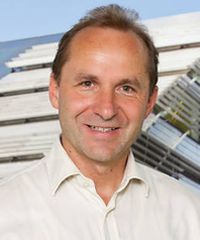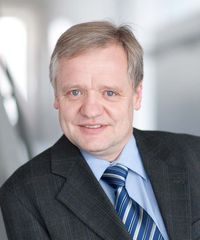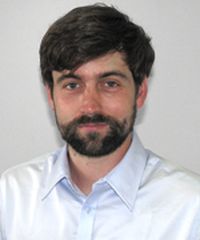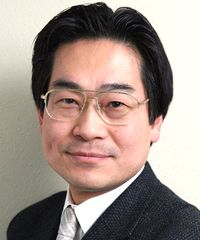We are very proud to present below a preliminary list of the Mini-Symposia which will be held at ISMB14. This list will be continuously updated and completed during the organization process. Already now, we would like to thank all organizers and invited contributors for their engagement – we are looking forward to a lot of interesting insights and updates from industry and academia.
Materials in Magnetic Bearing Technology
- Michael Weickhmann, VAC – Vacuumschmelze GmbH, Germany
“Nd-Fe-B permanent magnets for passive and hybrid magnetic bearings with extended application temperature range” - Frederik Fohr, VAC – Vacuumschmelze GmbH, Germany
“High strength iron-cobalt materials for magnetic bearings” - Prof. Ludwig Schultz, Leibniz Institute for Solid State and Materials Research, Germany
“Basics of Superconducting Levitation and its Application in the SupraTransII Transportation System” - Oliver de Haas,¬†evico, Germany
“Superconducting Magnetic Bearings for Industrial Applications” - Lars-Olov Pennander, H√∂gan√§s AB, Sweden
“Recent Development of Soft Magnetic Composite Materials and its Application”
- Joachim Schmied, Delta JS AG, Switzerland
“Rotordynamic simulations with MADYN 2000” - Siegfried Silber, Linz Center of Mechatronics GmbH, Austria
“MagOpt – Optimization Tool for Mechatronic Components” - Daniel Reischl, Linz Center of Mechatronics GmbH, Austria
“Coupled Mechanical and Electromagnetic Optimization of High Speed Rotors” - Pavel Karban, University of West Bohemia Pilsen, Czech Republic
“Code Agros2D and Possibilities of its Use for Modeling and Design of Magnetic Bearings”
Magnetic Bearings in Energy Technology I & II
The application of magnetic bearings for heavy rotors in the range of 2-9 t is becoming more and more interesting. Amongst others, the motivation for their use is the elimination of lubricants and thus the reduction of flammable material but also the improvement of efficiency of such machines. Often, these applications are marked by extreme environmental conditions that limit their field of use or require additional measures. The goal is to enable magnetic bearings for such fields of application. Besides magnetic bearings, special importance is given to catcher bearings. The Mini symposium treats this challenge. Precise examples from the laboratory and from industrial applications will give an introduction of the work and of first results.
- Joachim Denk / Bert-Uwe K√∂hler, Siemens AG, Germany, G√ľnther Siegl / Peter Siebke, Schaeffler AG, Germany
“Landing Tests with a 6300rpm, 9t AMB Rotor in Rolling Element Back-up Bearings” - G√ľnther Siegl / Theodora Tzianetopoulou, Joachim Denk, Siemens AG, Germany
“Simulation and Experimental Validation of a 9t AMB Rotor Landing in Rolling Element Back-up Bearings” - Peter Siebke, Hermann Golbach, Schaeffler AG, Germany
“A Novel Backup Rolling Bearing for a 9t Rotor Application” - Detlef Haje / Christoph Grund, Siemens AG, Germany
“Qualification of Magnetic Bearings for Industrial Steam Turbines” - Stephan D√ľsterhaupt, Holger Neumann, Christian Panescu, Torsten Rottenbach, Frank Worlitz, University of Applied Sciences Zittau/G√∂rlitz, IPM, Germany
“Test Field for Magnetic Bearing Applications under Extreme Conditions” - Jan Janse van Rensburg, North West University South Africa, Christian Vanek, Frank Worlitz, University of Applied Sciences Zittau/G√∂rlitz, IPM, Germany
Backup Bearing Modelling for Turbo Machines with High Axial and Radial Loads
Kinetic Energy Storage Systems I
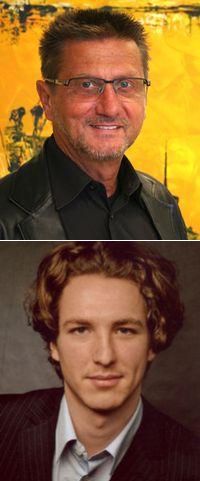
MS4 is organized by Prof. Johann Wassermann, Technical University Vienna, Austria and Manes Recheis, Technical University Graz, Austria
Flywheels represent an ecologically and economically sustainable technology for decentralized energy storage. Compared to other storage technologies such as e.g. accumulators, they offer longer life cycles (more than 25 years) without performance degradation over time and usage. Flywheels store electrical energy in the form of kinetic energy using a motor to accelerate a flywheel mass. The stored kinetic energy can be rapidly re-transformed to electrical energy by a built in generator. For high storage capacity, high revolution speeds and great rotating masses or rather high moments of inertia, are needed. New developments, investigations and optimizations in this field will be presented.
- Thomas Hinterdorfer , Technical University Vienna, Austria
“Topology Optimization of a Flywheel Energy Storage Rotor using a Genetic Algorithm” - Johan Lundin,
“High Speed Flywheels for Vehicular Applications” - Manes Recheis, Technical University Graz, Austria
“Increasing Bearing Life-Time of Mobile Flywheels by Using Bearing-Less Drive Methods”
Kinetic Energy Storage Systems II
Magnetic bearings are a key technology for economic kinetic energy storage systems. In addition to their general benefits they enable the realization of new topologies of such systems. This Mini-Symposium starts with a keynote to the Mini-Symposium by Giancarlo Genta, giving a deep insight into the benefits magnetic bearings bring to kinetic energy storage systems. The Mini-Symposia then focuses on the outer-rotor-topology, which enables a high energy density combined with a straightforward design. The expected lower production costs come along with large development efforts for these highly integrated systems. Hence the topology is in discussion for years, but still no such system is commercially available. Driven by the maturity of magnetic bearings and composite materials new approaches are currently undertaken worldwide.
- Prof. Giancarlo Genta, Politecnico di Torino, Italy
“Kinetic Energy Storage: an Ideal Application for Magnetic Bearings” - Hendrik Schaede, TU Darmstadt, Germany
“Losses in an Outer-Rotor-Type Kinetic Energy Storage System in Active Magnetic Bearings”
- Clay Hearn, University of Texas at Austin
“Superconducting Bearing Design for Outer Rotor Flywheel Using Lumped Parameter Techniques” - Arunvel Kailasan, Gardner Denver Inc., Industrial Products Group, USA
“Energy Storage Flywheel Magnetic Bearing System – Magnetic Linear Circuit Vs. 3‚ÄďD Finite Element Model Plus Electrical and Thermal Modeling”
- Maximilian Schneider, Technical University Darmstadt, Germany
“Development Process of Highly Integrated Outer-Rotor Flywheels”
Electrodynamic Bearings I & II
Electrodynamic bearings offer a simple way to achieve levitation without active control. Several concepts are possible and an overview will be presented. It has been shown that bearing stability requires external damping, so both fluid/mechanical dampers and electrodynamic dampers will be presented, and dynamic models will be derived. Finally, suitable applications will be discussed.
- Torbjörn A. Lembke, Lembke Elektromekaniska Verkstad LEV AB
“Review of Electrodynamic Bearings” - Fabrizio Impinna, Politecnico di Torino, Italy
“Test and Theory of Electrodynamic Bearings Coupled to Active Magnetic Dampers” - Joaquim Girardello Detoni, Politecnico di Torino, Italy
“Stability of a 4 Degree of Freedom Rotor on Electrodynamic Passive Magnetic Bearings” - Corentin Dumont, Virginie Kluyskens, Bruno Dehez, Universit√© Catholique de Louvain, Belgium
“Impact of the Yoke on the Performance of Electrodynamic Bearings” - Virginie Kluyskens, Bruno Dehez, Universit√© Catholique de Louvain, Belgium
“Optimization of a new radial electrodynamic damper” - Torbj√∂rn A. Lembke and invited experts,¬†Lembke Elektromekaniska Verkstad LEV AB
“Discussion about Electrodynamic Bearings”
MagLev technology for Artificial Hearts
Magnetic levitation technology, for magnetic bearings and magnetically suspended motors, is a cutting edge technology to produce artificial hearts and higher performance blood pumps. A wider blood gap and eliminating the contacting parts in the device based on the maglev technology provide better blood compatibility and higher durability of the device. Novel inventions about the maglev mechanism are required to overcome the size and power limitation of artificial hearts. Specialization of the maglev system is also necessary due to different requirements with the spreading application of artificial hearts. The current research topics of the maglev system for artificial hearts and blood pumps will be presented in the mini-symposium.
- Prof. Toru Masuzawa, Ibaraki University Engineering Education & Research Center for Life support Science, Japan
“Magnetically suspended motor system for artificial hearts and blood pumps” - Prof. Paul Allaire, Rotor Bearing Solutions International, University of Virginia (ret.), USA, Wei Jaing, University of Virignia, USA
“Magnetic Bearing System for Left Ventricular Assist Artificial Heart Pump – Combined Active and Passive Configuration” - Prof. Tadahiko Shinshi, Tokyo Institute of Technology, Japan
“Development of extra-corporeal maglev blood pumps” - Prof. Nobuyuki Kurita, Gunma University, Japan
“Optimization design of magnetically suspended system for the BiVACOR total artificial heart”

